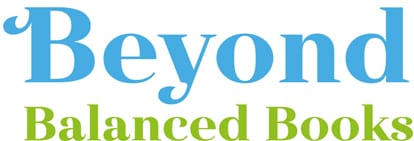Most people are aware of Marie Kondo, the Japanese organizing consultant who has set off a decluttering craze across the globe. Marie Kondo is all about cleaning up your life and having less clutter. Described as a state of mind and a way of life, the KonMari Method™ emphasizes you to treasure items that “spark joy”. She is the author of several self-help books and the star of the Netflix series “Tidying Up with Marie Kondo.”
Wouldn’t it be nice if your bookkeeping processes could “spark joy” as well? In this article, we will take a look at how to apply this to your work life by going paperless.
What it means to go paperless
What does it mean to go paperless? It sounds somewhat self-explanatory, but this is a good question.
The goal is to convert that paper to electronic as soon as possible and get rid of the paper as soon as possible. This means that you won’t constantly have receipts floating about (YAY!!!!). It also means that you will have a workflow set up and paper will have a very short life in your office.
Now this, of course, is a little bit more complicated than just saying “throw out all your paper!” But when you have the right tools at your fingertips you can accomplish the exciting task of going paperless.
Here are our steps to help you to go paperless:
- Choose the tools to use
- Establish a workflow
- Communicate this idea to your entire team
Choose the tools to use
Choosing which tools to use is an important step because you need to be able to capture the information on your paper documents and you also need to have it stored in such a way that you can access it as needed. So planning on where it will go and what you will do with it are vital! Some tools we recommend:
Establish a workflow
Now that you have decided which tools to use, you need to decide how exactly you are going to use them.
For example, will you use Dext to capture your receipts and then import them into your Xero file to Xero Files? Will you use Hubdoc to capture your statements and then send them into Xero Files?
Think about your workflow from the very start. Where is this paper coming from and where is it going once it is converted into an electronic form? What do you do with the paper once you no longer need it? (We suggest having trash, shredding, and recycling bins in your office.)
Sometimes the best way to set up your workflow is to physically draw it. Now that may seem counterproductive, but of course, there can be room for some types of paper in your office, if that works for you. In our firm, we love using notebooks to write out our ideas and sometimes even draw things. We use different colored pens and it really gets our brain flowing and helps us to create.
Remember, paperless may mean different things to different people, but you want to create a system that cuts clutter and that is organized.
Communicate this idea to the entire team
Now it’s time to get the whole team involved! This is important because if you are the only one that is paperless in the office it won’t last long. Your team needs to know what to do when they have paper so as to facilitate the workflow.
Make sure you explain clearly what everyone’s role is within the workflow. At first, your team may experience some growing pains because change can be hard, but soon everyone will see how much better it is when you go paperless!
Spark Joy!
Most of you got into your line of work because you loved the craft that you have chosen. That’s awesome and really fundamental to a successful business. But when it comes to your accounting system and bookkeeping tasks, you’d really rather be doing anything but that.
By partnering with an accounting professional that is passionate about their work, you can focus on the aspects of the business that matter to you. You still have the day-to-day operations that need to be taken care of, but you can still find joy in them if you set them up in a way that is not painful. Contact us to learn how we implement the tools and technologies to spark joy in your accounting.
Updated 6/28/2021

